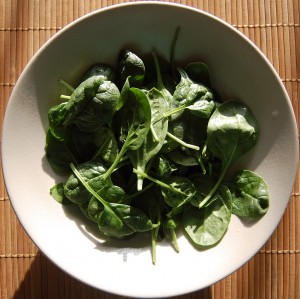I mentioned Art de Vany’s new book on Saturday; today I came across a few blog posts relating to some of his more important ideas and thought I’d talk about them.
The Economic Analysis of Diet
Today I recorded an interview with Jimmy Moore, which should appear on his “Livin’ La Vida Low-Carb Show” sometime early next year.
One of the things we talked about was our “economic” approach to nutrition and diet – how analyzing nutrients the way economists analyze factors of production helps sort out the confusing, seemingly contradictory results found in the scientific literature.
Since any factor calorie that is overly abundant will look like a “bad factor calorie” and any factor calorie that is too scarce will look like a “good factor calorie,” it’s easy to explain why the same nutrient can appear as “good” or “bad” in different studies.
Today, Mark Sisson features a passage from Art’s book. He says this:
At some point I realized that a human being is just another economic system. Indeed, your body contains an entire economy. There is the allocation of assets according to a hierarchy of needs. There are competing interests that sometimes struggle over resources and other times cooperate for the common good. There are surpluses. There are shortages. Like economies–like the movie industry–your body is a complex, decentralized system poised between chaos and order.
We tend to think of biologists as rigorous “hard” scientists and of economists as mushier “soft” scientists, but actually in analyzing complex cooperative networks economists are decades ahead of biologists.
The analysis in many biology papers, if translated into an economics paper with factors of production substituted for the dietary nutrients, would be recognized immediately by most economists as primitive and fallacious. Economists have developed many analytical ideas that diet researchers could usefully copy. It’s no surprise that Art and I both found our economics backgrounds helpful in sorting through the diet literature.
Intermittency in Diet
If there is a single idea that I associate with Art, it’s the desirability of intermittency and randomness to explore the extremes of the body’s metabolic networks.
Art touches upon this in the passage at Mark’s site:
According to chaos theory, certain systems that seem to be random in fact are not–it’s just difficult for us to perceive, at the outset, all the subtle factors that set the course and determine the outcome….
Another scientific concept, the power law, also comes up often in my discussions of health and fitness. It is based on the Pareto principle, named for Italian economist Vilfredo Pareto. In essence, it describes the relationship between how common a factor is and how much influence it exerts. It says that the most unusual events will have the greatest impact. Pareto’s study determined that 80 percent of privately held land in Italy was owned by 20 percent of the population.
Similar power laws exist all around us.…
There is a power law of exercise, too: Your least frequent, most extreme exertions will have the greatest influence on your fitness. The peak moments of a workout count far more than the amount of time you spend working out…. When a work-out becomes an unvarying, monotonous routine, it loses its effectiveness.
Art’s ideas suggest that it might be beneficial to explore dietary extremes, for instance in calorie intake. Sometimes we should fast, forcing our body to economize on nutrients; sometimes we should feast, giving our body a surplus of nutrients that it has to dispose of.
In our book we discuss the benefits of intermittent fasting – it promotes autophagy, which extends lifespan and protects us against bacteria and viruses – but we don’t discuss whether feasting has any merits.
While there has been no real scientific study of feasting (except in the context of every-other-day implementations of intermittent fasting), feasting has been a hot topic in the Paleo blogosphere lately:
- Martin Berkhan’s Leangains approach features intermittent fasting punctuated by occasional feast days.
- Matt Stone’s 180-Degree Health approach is based on periodic overfeeding.
Coincidentally, Chris Masterjohn today offers us a review of Tim Ferriss’s new book, The 4-Hour Body.
For weight loss, Ferriss recommends intermittent fasting and feasting:
His fat-loss regimen sticks to a five-rule “Slow-Carb Diet” six days a week, but on the seventh day he resteth. This is the day for “reverse Lent,” otherwise known as bingeing on whatever the heck you want. In fact, Ferriss considers overfeeding one day a week to be a critical component of his fat loss regimen because of its effects on metabolism-boosting hormones.
In this respect he seems to have come to conclusions similar to those of Ori Hofmekler of Warrior Diet fame, who advocates fasting in the day and overfeeding in the night, and Matt Stone, whose High-Everything Diet uses overfeeding as its very lifeblood.
Stone recently told Jimmy Moore that one of the issues he’s still trying to tweak with his diet is to get rid of the initial gain in weight. Tim Ferriss may have solved that problem with his version of overfeeding, as folks on his diet usually gain weight on overfeeding day but nevertheless experience a net loss of several pounds per week from the very beginning.
So add Ferris to the group of self-experimenters who find benefits from occasional feasting.
Chris also discusses protein restriction:
Ferriss notes that periodic fasting from protein induces a process called autophagy, wherein the cell cleans out its mishandled, degraded, and aggregated proteins that otherwise accumulate. This is consistent with my experience. I had developed a problem with small wart-like risings on my hands and fingers at one point. Complete fasting for two weeks helped somewhat, but going vegan for two weeks made them completely disappear. The problem has never come back, despite my regular sumptuous feasting on animal foods of all kinds.
Perhaps protein cycling provides an answer to the question I had raised in The Curious Case of Campbell’s Rats. Namely, is there an intermediate intake of protein that maximally protects against cancer, toxicity, and fatty liver under all conditions? Perhaps the answer is not an intermediate intake of protein, but a periodic cycling of protein intake.
We note in our book (and this blog post) that protein restriction, even if calories are not restricted at all, promotes autophagy and therefore intracellular immunity and longevity. So we’re happy to endorse protein restriction.
But high intake of protein, especially of ketogenic branched-chain amino acids like leucine, does promote muscle synthesis. So what is a bodybuilder or athlete, who seeks the greatest possible muscle growth, to do? Is there an inevitable conflict between athleticism and longevity?
It’s possible that protein cycling – say, a week of protein restriction followed by a week of high-protein intake – might help resolve the dilemma, providing 80% of the longevity and health benefits of protein restriction and 80% of the muscle synthesis benefits of high-protein diets.
If so, Art de Vany would not be surprised.














Recent Comments